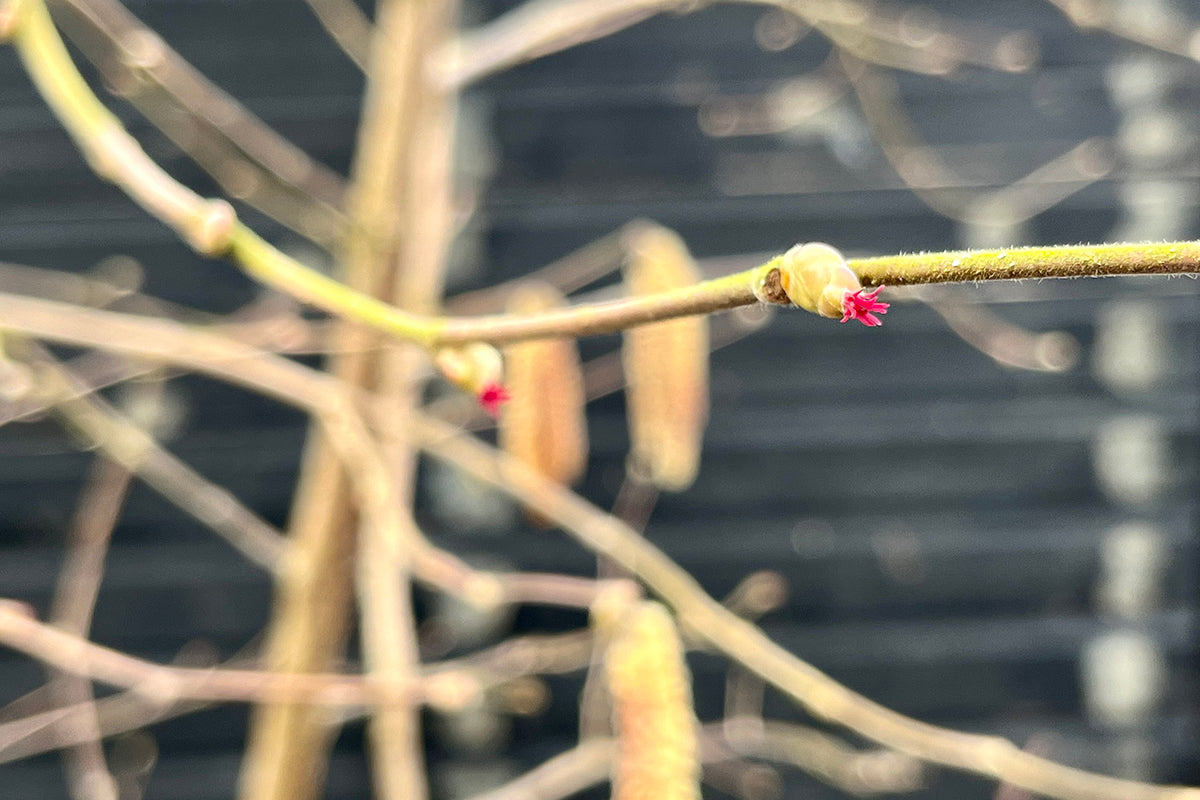Gone nutty

Hidden behind our showroom at Genus HQ is our nuttery. Planted three years ago, the clumps of hazel (Corylus avellana) are maturing well with some of the shrubs (or are they trees?) in excess of 8ft high. We decided on the varieties ‘Corabel’, ‘Halls Giant’, and ‘Red Filbert’. All but one have thrived in the semi-shaded spot on the edge of our small copse. One did suffer from an attack by our local hare who decided that hazel bark would make a nice addition to its diet but thankfully, hazel’s propensity for regeneration has meant that by cutting it down to the ground new growth has been produced.
We've yet to take a crop from the nuttery - it’s a slow process - and so far the few nuts that have been produced have been borrowed by our resident squirrels for their winter store and the discovery of hazel saplings in the borders suggests Mr and Mrs Nutkin have not kept their map of seasonal provisions up to date.
Eventually we’re hoping to not only gather a useful crop but also coppice the clumps in rotation to provide ourselves with bean sticks and plant supports. Being monoecious, hazel have both male and female flowers on the same plant. We’re all familiar with the long male catkins that appear in early spring well before the leaves appear but how many of us have ever noticed the tiny female flowers that emanate directly from the side branches (pictured).
There’s a popular folk tune ‘Here we go gathering nuts in may’. It’s a nice idea but nuts, of course, are harvested in late autumn. It’s probable that the ‘nuts’ in the song are actually ‘knots’, referring to bunches of may-blossom that appear in hedgerows of hawthorn in late spring.
Back to the conundrum of ‘tree or shrub’. It seems hazel can be both! A tree is a woody plant with a single trunk or stem. A shrub is a woody plant with several stems arising from low down. Like a lot of things however it seems there is a bit of a spectrum and even botanists can at times scratch their heads over the exact definition. In our case it seems that hazel could be both and can be grown either as a tree or a shrub depending on the management technique involved.











